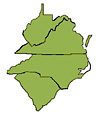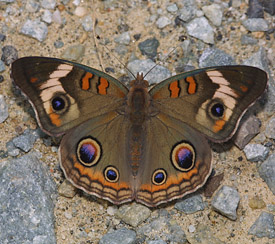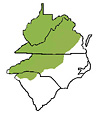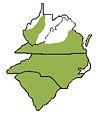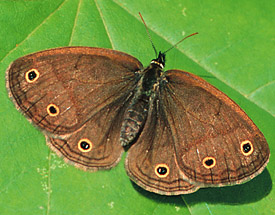| Common Butterflies Page #05 | ||
| Brush-footed Butterflies are a diverse family with many sub-species as you shall see in the pages. All members of this family have greatly reduced front legs which are used for smell. In fact without close inspection you might gather that they have only four legs. | ||
| Common
Buckeye, Junonia coenia This very common species is very widespread and found in open grassy areas in the entire region. They can be highly variable in coloration and marking from season to season |
|
|||
 |
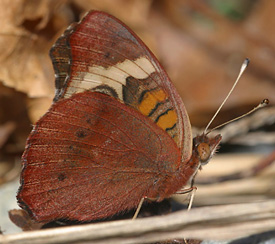 Fall (rosa) form |
|||
| Red-spotted
Purple, Limenitis arthemis astyanax This species can be found hill topping along roadsides, on carrion or rotten fruit. As you can see, it is pretty easy to identify. |
|
|||
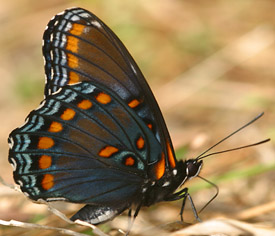 |
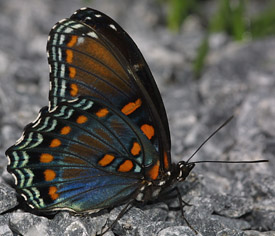 |
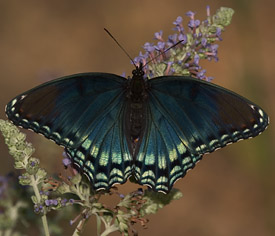 |
||
| Viceroy,
Limenitis archippus The Viceroy looks a lot like the Monarch which is a bit larger and flies much slower. They can be found along waterways with lots of willows, the host plant. They are common and widespread throughout the region yet uncommon in the mountains. |
|
|||
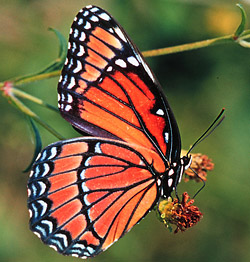 |
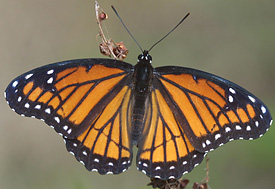 |
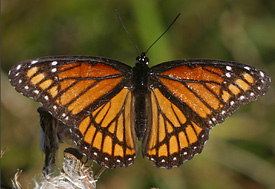 |
||
| Hackberry
Emperor, Asterocampa celtis This species you might find attracted to your sweat and they will land on you. Once I had three of them on me at one time. They are attracted to rotten fruit, tree sap, carrion, dung and rarely visit flowers. The uncommon Tawny Emperor is a similar species that you might encounter having the same exact habits as the Hackberry Emperor. Both are found along bottomlands, waterways and bridges near hackberry trees. |
|
|||
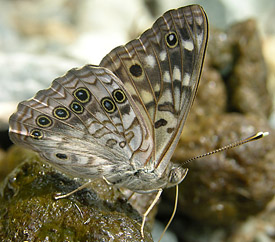 |
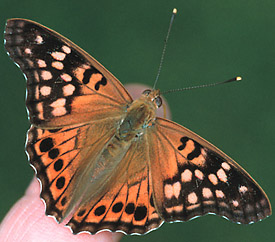 |
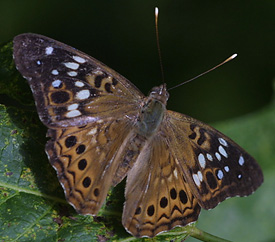 |
||
| Northern
Pearly-eye, Enodia anthedon This is a woodland species that likes shady grassy spots and it can be found on overcast days because it is more active out in the open. They will visit rotten fruit, tree sap, dung and carrion. It is a northern species of pearly-eye; take note of the range map at right. In the southern edge of the range, the confusion starts with two other species that are difficult to tell apart, the Southern Pearly-eye and Creole Pearly-eye. These two species are found near cane thickets. |
|
|||
 |
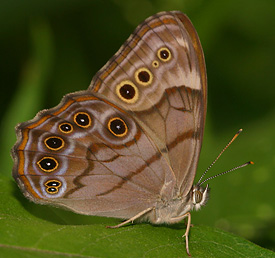 |
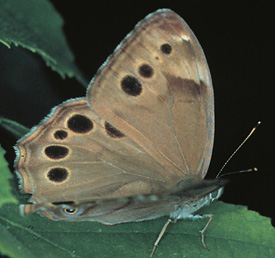 |
||
| Carolina
Satyr, Hermeuptychia sosybius The satyrs must be named for the bouncy weaving flight which is very distinctive. All you need to do is walk into grassy shady areas and you should find them during most of the season. If you find a small satyr nectaring on flowers, it will be a Carolina Satyr as they are the only common satyr that visits flowers. The similar species are the larger Little Wood-Satyr (next species) and Gemmed Satyr. |
|
|||
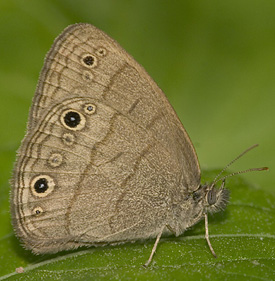 |
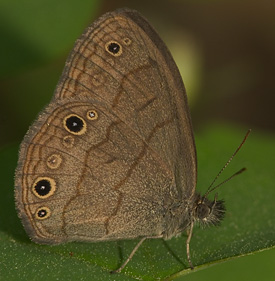 |
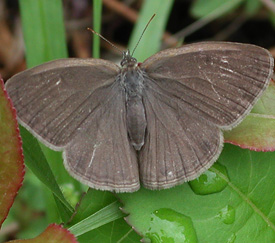 The only satyr without eye spots above. |
||
| Little
Wood-Satyr, Megisto cymela This is a slightly larger satyr and it enjoys the same type of habitat as the Carolina Satyr. Note the large eye-spots, two on each wing. The Carolina Satyr has smaller eye-spots and rarely shows the second spot on the forewing and shows no spots from above. In the very southern edge of the region, one could encounter the rare Viola's Wood-Satyr. |
|
|||
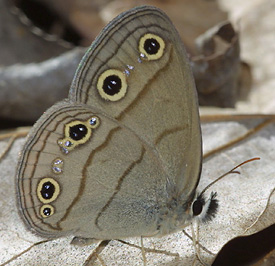 |
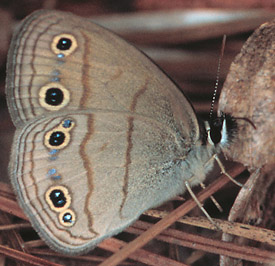 |
|
||
| Common
Wood-Nymph, Cercyonis pegala This species is widespread in the region, likely the most common in the mountains. It is highly variable, the cream patch is normal in this region; in other parts of the country, it does not have the cream patch. These can be seen bouncing across meadows and pastures and occasionally it visits flowers. |
|
|||
 |
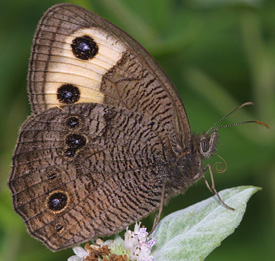 |
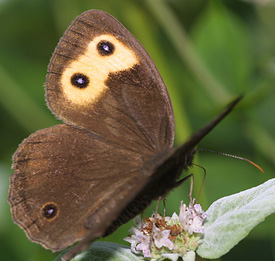 |
||
| Monarch,
Danaus plexippus The Monarch is the most well known butterfly in the US, if not the world. You might mistake the smaller faster flying Viceroy which has white crescent shaped spots in the wing borders, Monarch two rows of white spots. |
|
|||
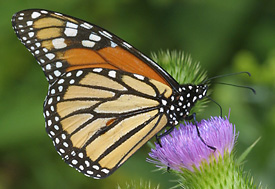 |
 |
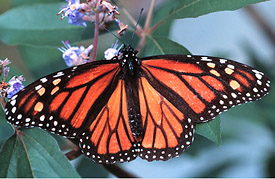 |
||
| Common
Butterflies Page #06 Go to Skippers |
||||
